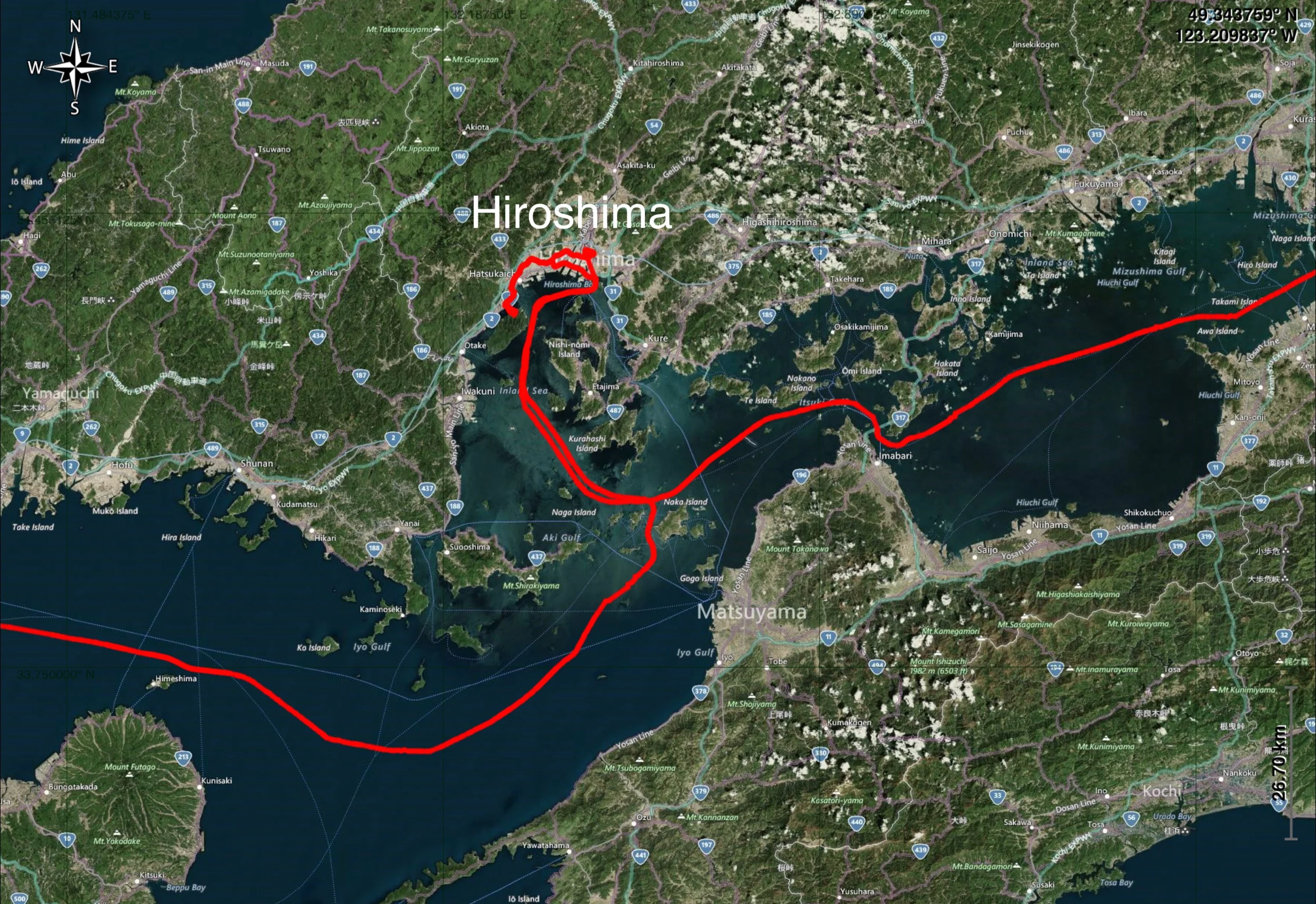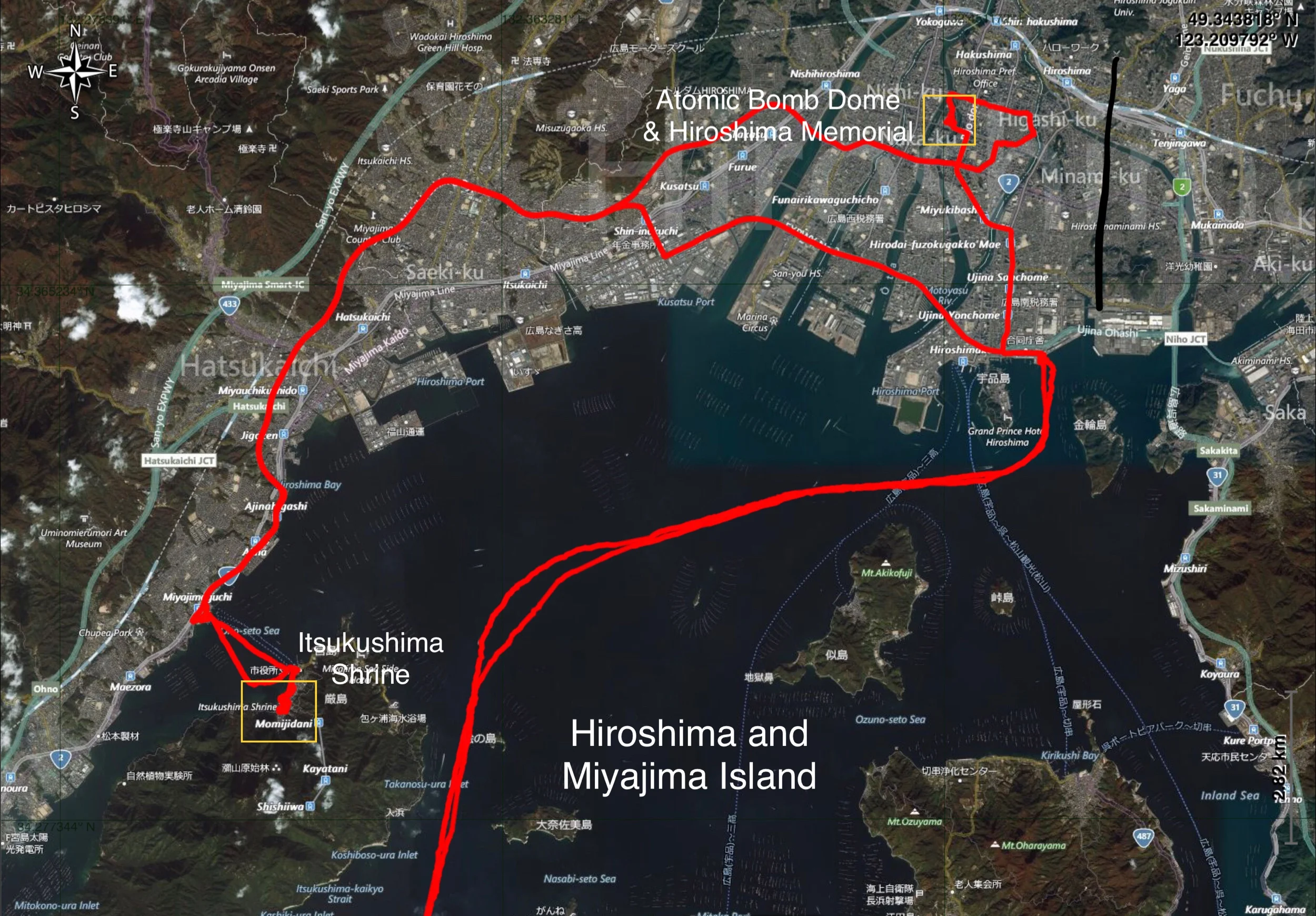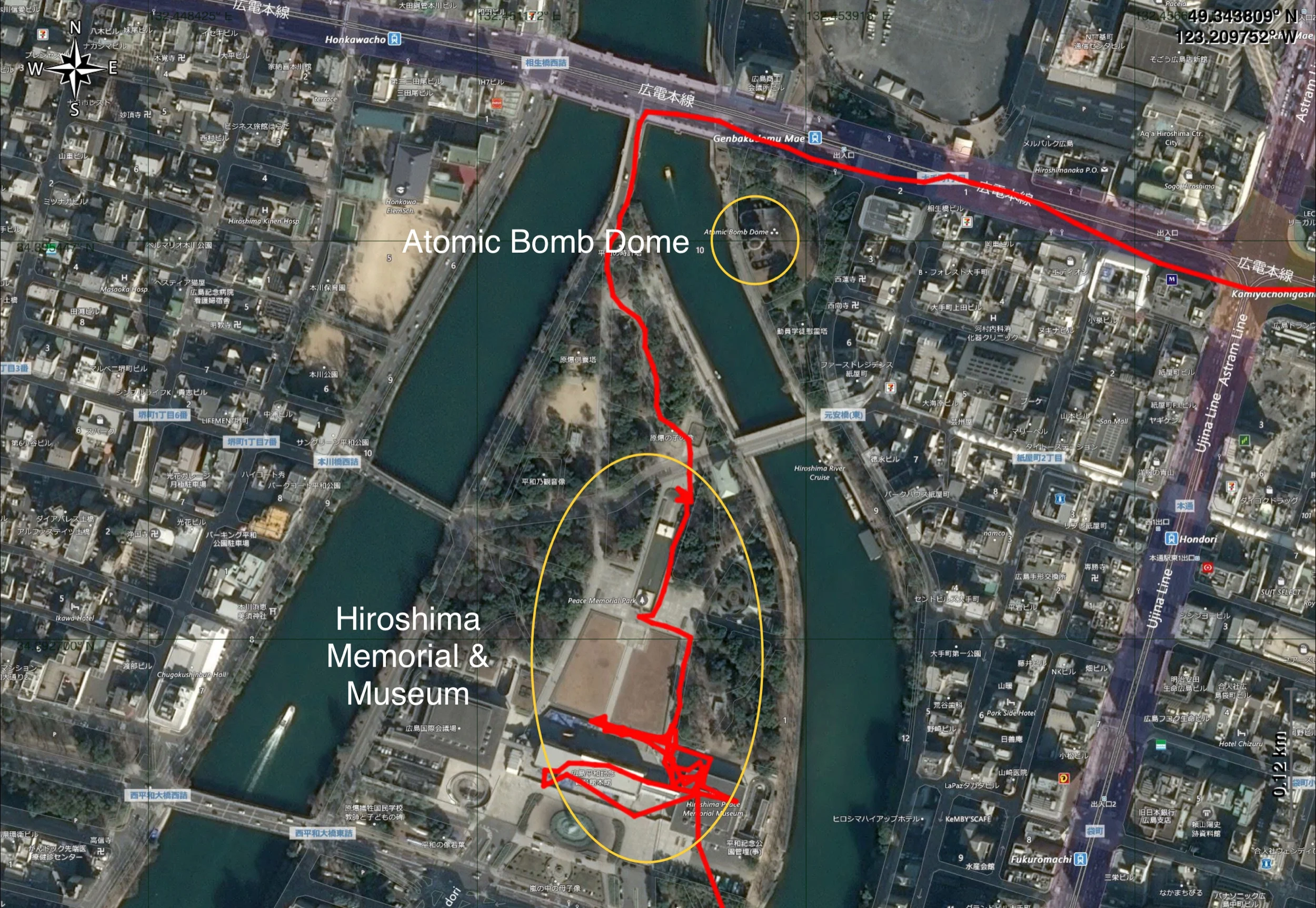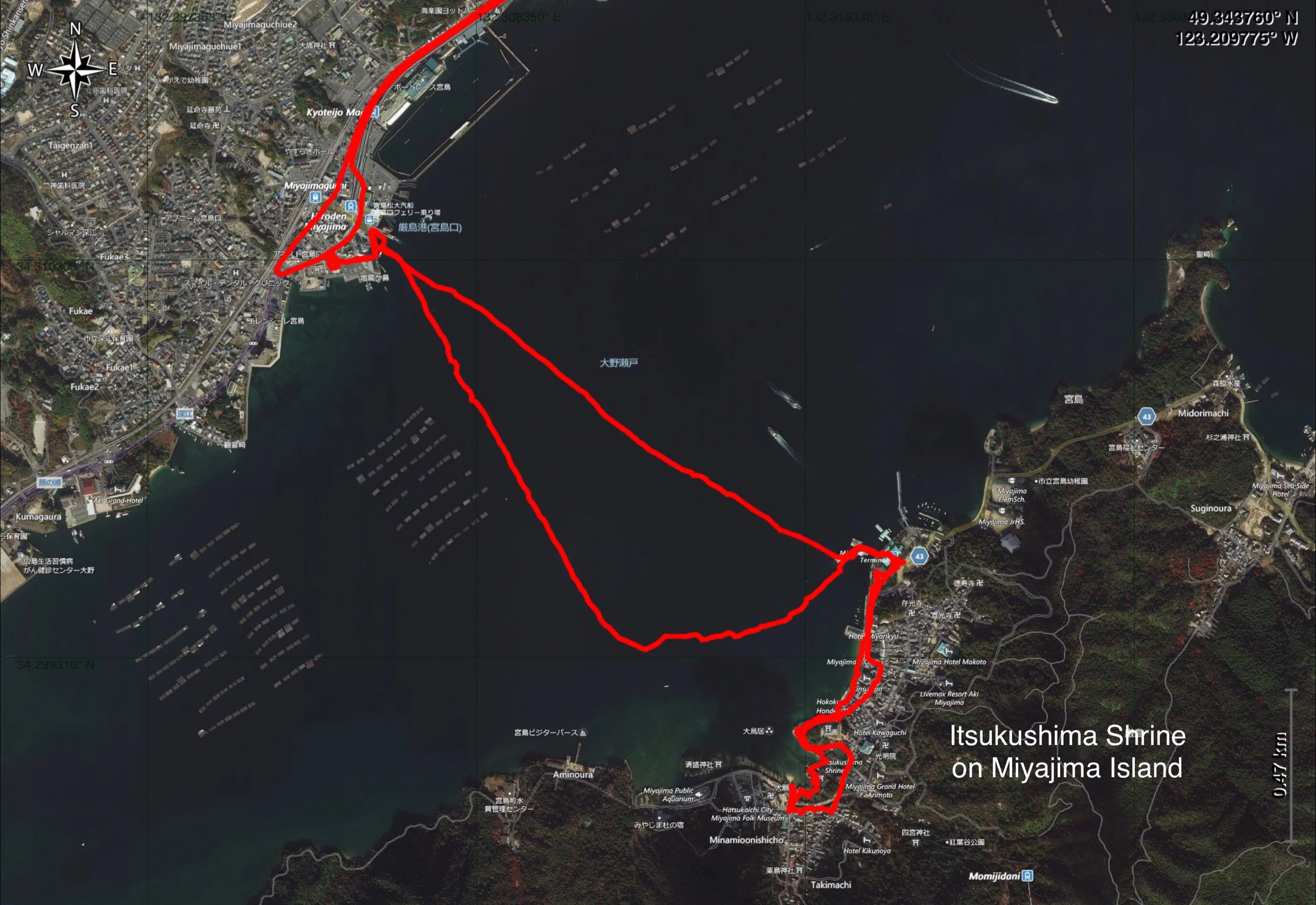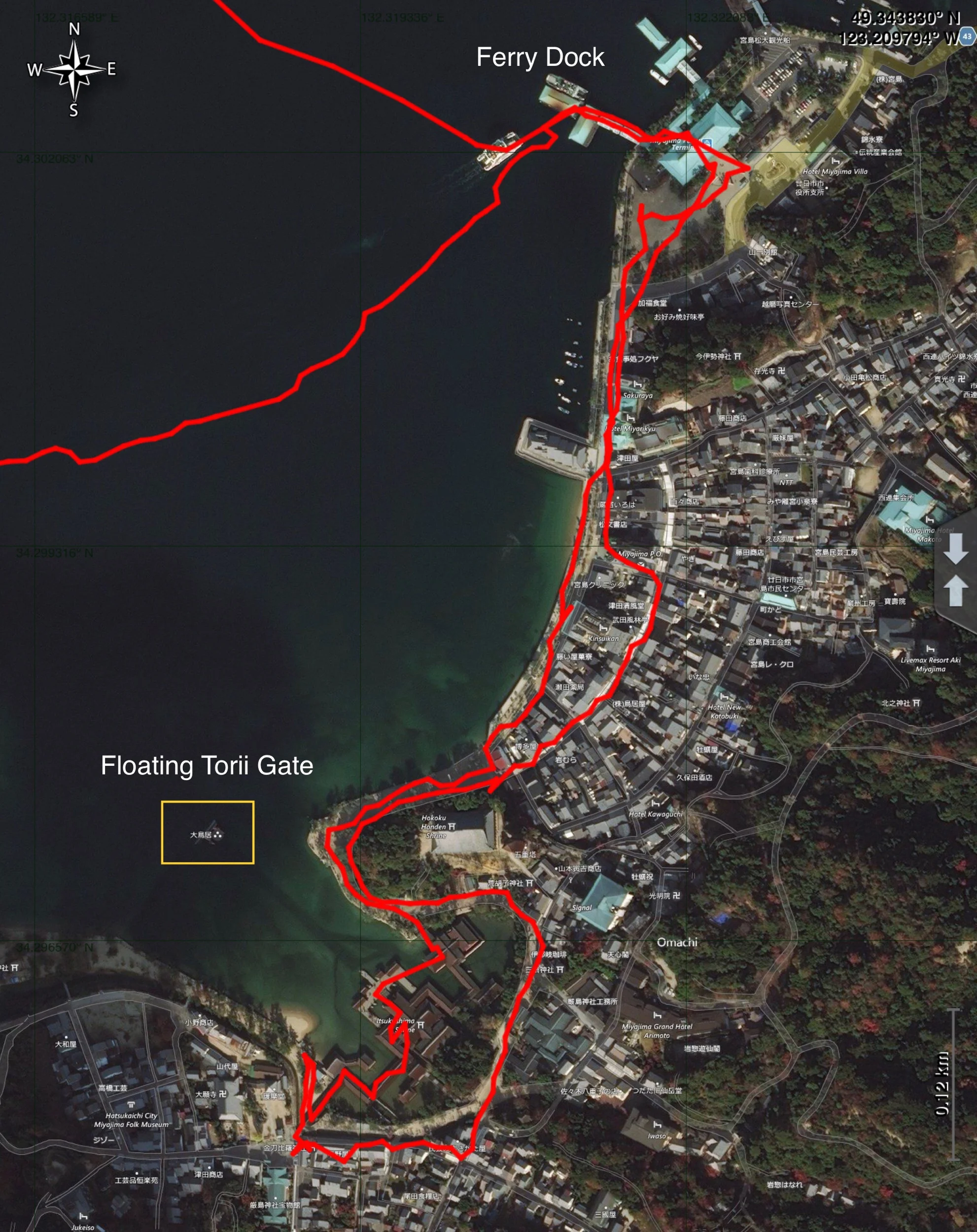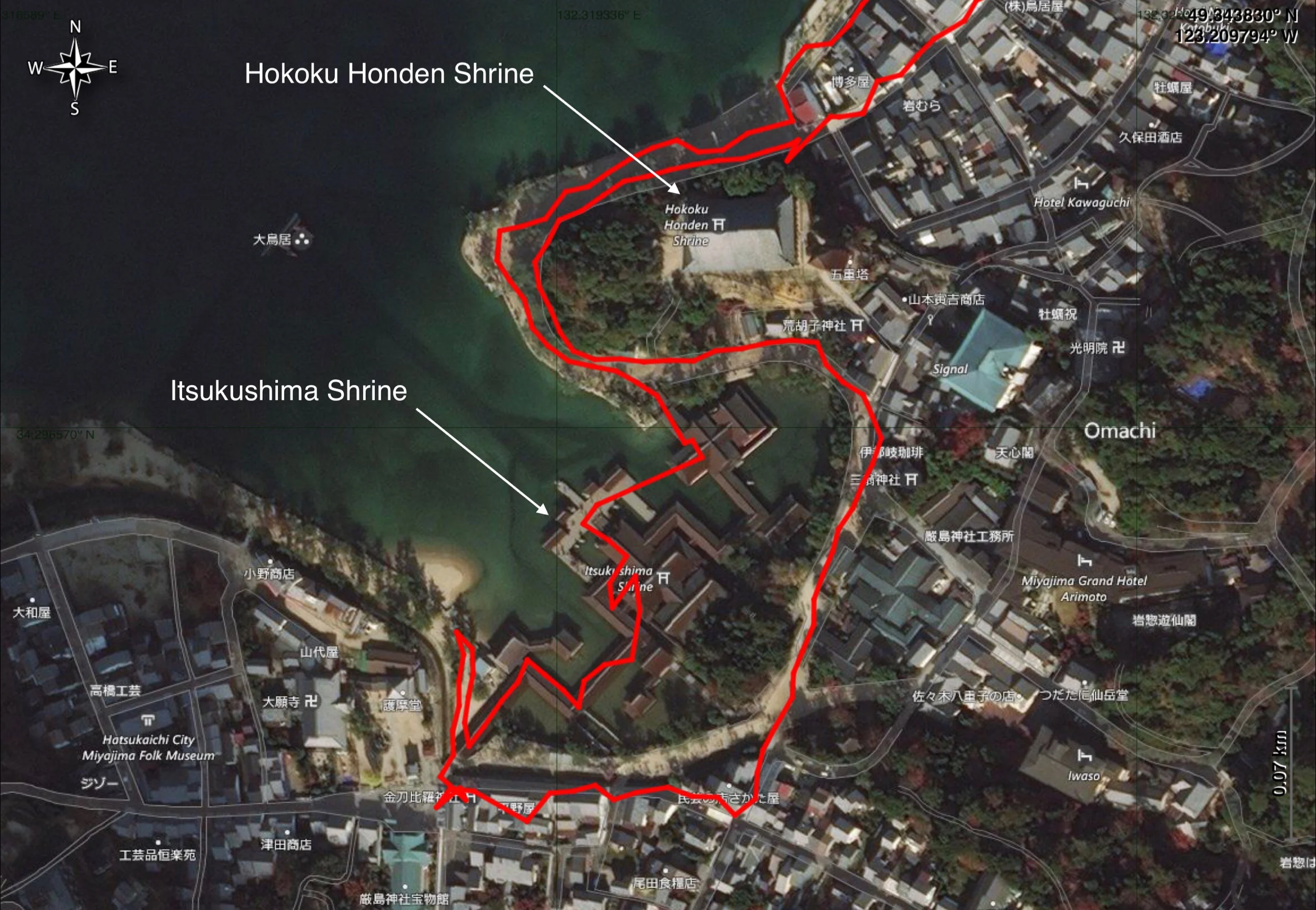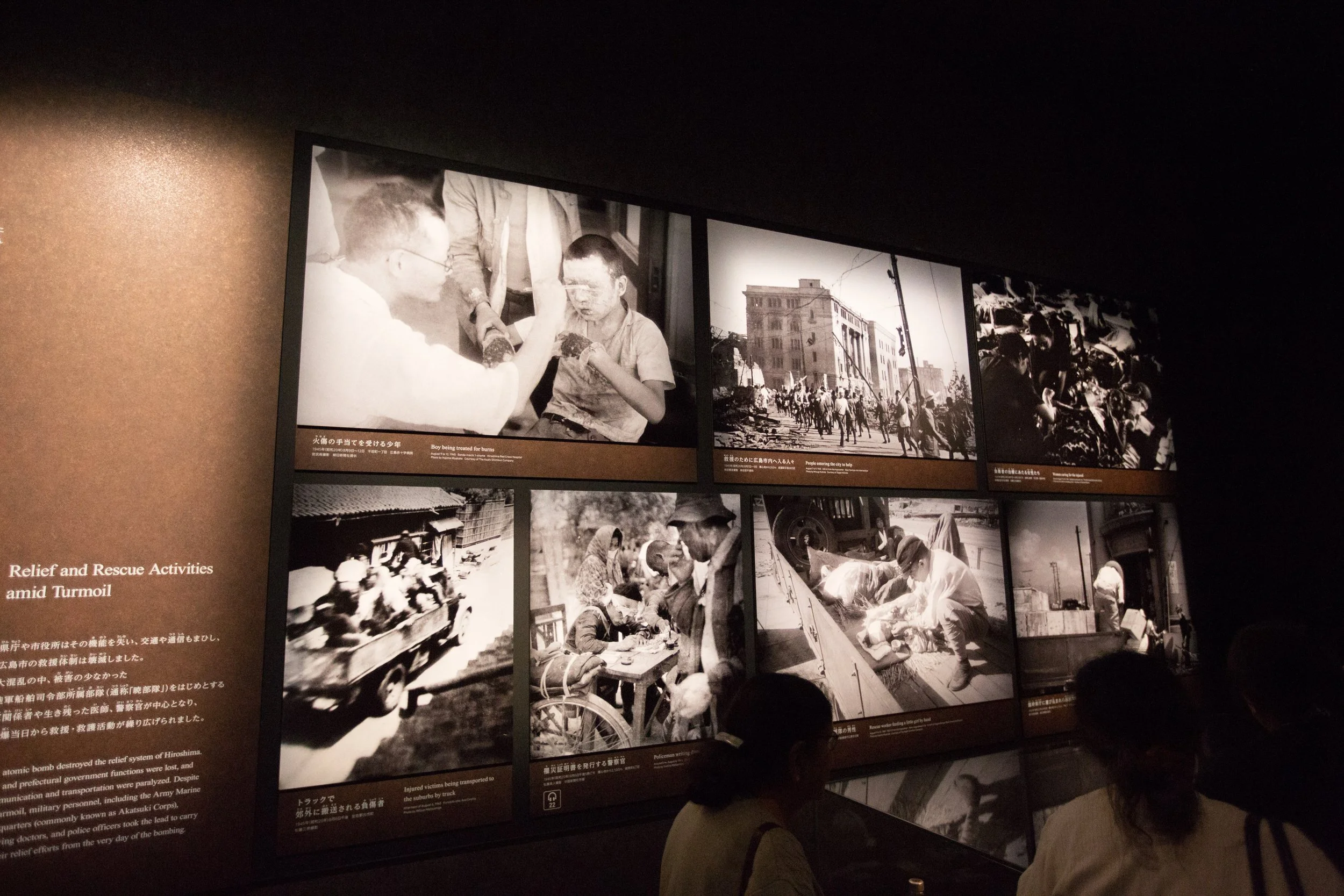Hiroshima and the Inland Sea
May 6-7, 2019
Arriving in Hiroshima
Our journey from Kitakyushu to Hiroshima was actually a very short one, despite the fact that they moved the ship in the overnight hours. It actually would have been nice to do it in the daylight so we could see some of the Japanese coastline.
That being said, by doing it at night it gave us more time ashore to see the sights that we had chosen for this location. Number one, of course, was to visit the Atomic Bomb Dome and Hiroshima Museum and Memorial. The other was to see Miyajima Island and the Itsukushima Shrine.
Miyajima Island
The famous floating Itsukushima Torii Gate as seen from the island itself.
It was our choice for the order in which we visited the two sites here in Hiroshima, and since we didn’t want to be rushed at the Hiroshima Museum and Memorial, we chose to visit Miyajima Island first. This way we could spend as much time at the Memorial as we wanted, since after that it was back to the ship.
In order to get to the island we first had to take a bus to a location where we could catch the short ferry ride over to the island. Miyajima Island is not only known for the Itsukushima Shrine, which is a very impressive religious location, but also for the deer that live right in amongst the villagers and their dwellings and shops. However, unlike another famous deer location where you can buy food to hand feed the friendly deer, at this location it is strictly forbidden to do so. These deer are still considered wild, and as such can display a short temper if you overstep their comfort zone.
Our traveling companions ahead of us as we walk through the town streets to get to the shrine.
Once on the island and sorted with instructions on where to go, we were pretty much left to ourselves to explore what we wished. There was even a hike one could do up to the top of the island’s mountain, but that meant foregoing all the other sites, so we passed on that activity. To get to the shrine, we had to make our way along the beachwalk and past the local homes and storefronts.
Our tour guide is the person walking through the fence with the number 4 sign held up.
Once we had made our way through the small township it wasn’t very long before we came into the lineup for entrance into the Itsukushima Shrine. Once again, because we were part of an organized and prepaid tour, we were able to by pass the line and head straight into the shrine itself. This pre-organization saved us a lot of time that we could now devote to marvelling at the wonders in the shrine.
And yes, if you were going to ask, this shrine also had a large quantity of saki casks lined up in numerous locations around the shrine buildings. It makes one wonder if there is any production of saki left for the public to consume.
When we were finished at the shrine we headed back to the ferry by way of the little town’s marketplace. There we could find all manner of souvenir nic-nacs. Restraining ourselves from bringing home more useless junk, we assembled at the ferry building to await our ride.
Once back across the water we headed for the elegant Oriental Hotel, where a lunch had been organized so as to fortify us for what was yet to come, the Hiroshima Memorial & Museum.
The Hiroshima Memorial & Museum
Peace and tranquility in an immaculately kept memorial park.
The Hiroshima A-bomb Memorial, located in Peace Memorial Park, is something that one has to experience in person for it to be fully absorbed. Situated on an island nestled between the two forks of the Motoyasu River, the exterior grounds are intensely beautiful and fill the visitors with an incredible sense of peace and tranquillity. Yet inside the museum one is confronted with the most egregious scenes of carnage, destruction and human suffering that anyone could possibly imagine. Many of the scenes are disturbing and difficult to look at, but look we must in order to appreciate why the world must never again resort to such outrageous tactics to resolve our conflicts.
The Atomic Bomb Dome on the bank of the Motoyasu River. The memorial park starts on the opposite bank of the river.
Our visit to this venerated site started at the far end of the park away from the museum itself, which allowed us to walk through, view and contemplate the various monuments that have been created to honour the tens of thousands of victims of this one indecent act. On the opposite river bank to the park itself are the remains of a building that is now called the Atomic Bomb Dome. It is widely regarded as the only building to remain standing, at what was estimated to be, ground zero for the detonation of the atomic device that was unleashed on August 6, 1945 at 8:14am. The blast was equivalent to fifteen thousand metric tons of TNT, and its effects killed between 90,000 and 146,000 people, mostly civilians. It was complete and utter madness.
The Atomic Bomb Dome can be seen nearly a half kilometre away.
The whole memorial park is designed around the location of the Atomic Bomb Dome, and stretches in a linear pattern nearly half a kilometre to the opposite end where the museum and the Prayer Fountain are located. Standing at the end near the museum, one can look back and see all of the monuments lined up in a row, including the Atomic Bomb Dome which rises over them all. The precision is almost mathematical in nature. The day started out overcast and dreary, but by the time we came out of the museum there were breaks in the clouds and the blue sky and sun warmed both the air and our spirits.
Main Memorial Features
“MEMORIAL MONUMENT FOR HIROSHIMA, CITY OF PEACE
(MEMORIAL, CENOTAPH FOR THE A-BOMB VICTIMS)
LET ALL THE SOULS HERE REST IN PEACE
FOR WE SHALL NOT REPEAT THE EVIL”
“This monument embodies the hope that, Hiroshima, devastated' on 6. August 1945 by the world's first atomic bombing, will stand forever as a city of peace. The stone chamber in the center contains the Register of Deceased A-bomb Victims. The inscription on the front panel offers a prayer for the peaceful repose of the victims and a pledge on behalf of all humanity never to repeat the evil of war. It expresses the spirit of Hiroshima - enduring grief, transcending hatred, pursuing harmony and prosperity for all, and yearning for genuine, lasting world peace.
Erected 6 August 1952”
Text taken from the plaque displayed on site.
Pond of Peace
“The Fifth Japan Junior Chamber of Commerce and industry's member conference held in Hiroshima in the fall of 1956 concluded with the words, "Commemorating this event, we shall bequeath a memorial to Hiroshima.” As a result of the gift of Junior Chambers of Commerce throughout Japan, the Pond of Peace was constructed on July 31 1957. The unveiling ceremony for the gift to the city of Hiroshima took place on the following August 3. The pond encircles the Cenotaph for the A-bomb Victims and was designed to make the cenotaph seem as if it were floating up out of the pond’s waters. By the time the Flame of Peace was lit on August 1 1964, the committee responsible for construction of the pedestal of the flame had altered the pond, to its current dimensions by inceasing its width to 17 meters and Its length to 70 meters backward from the cenotaph.”
Text taken from the plaque displayed on site.
Flame of Peace
“At the northern edge of the Pond of Peace there is the "Flame of Peace" which was built with donations from all over Japan. It was designed by Tokyo University professor Kenzo Tange and completed oh August 1. 1964. Symbolizing the universal desire for a world free from nuclear weapons, the flame will burn until the day when all such weapons shall have disappeared from the earth. The flame lies in a direct line between the cenotaph and the A-bomb Dome The pedestal is art abstract rendered of two hands opening upward. At its completion, the fame was lit by representatives of 36 temples, shines, and churches in japan as well as representatives of Japanese industry who brought torches symbolizing religion and industry. About 10,000 observers offered silent prayer.”
Text taken from the plaque displayed on site.
Children's Peace Monument
“This monument stands in memory of all children who died as a result of the atomic bombing of Hiroshima. The monument was originally inspired by the death of Sadako Sasaki, who was exposed to radiation from the atomic bomb at the age of two. Ten years later Sadako developed leukemia that ultimately ended her life. Sadako's untimely death compelled her classmates to begin a call for the construction of a monument for all children who died due to the atomic bomb. Built with contributions from more than 3,200 schools in Japan and donors in nine countries, the Children's Peace Monument was unveiled on May 5. 1958.
At the top of the nine-meter monument, a bronze statue of a young girl lifts a golden crane entrusted with dreams for a peaceful future. Figures of a boy and a girl are located on the sides of the monument.”
Text taken from the plaque displayed on site.
Bell of Peace
“We dedicate this bell
As a symbol of Hiroshima Aspiration: Let all nuclear arms and wars be gone, and the nations live in true peace!
May it ring to all corners of the earth to meet the ear of every man, for in it throb and palpitate the hearts of its peace-loving donors.
So may you, too, friends step forward, and toll this bell for peace!
Dedicated September 20th, 1964 by Hiroshima Higan-No-Kai.”
Text taken from the plaque displayed on site.
Photos Taken From in & Around The Museum
These are the images that we took on this experience. The visuals inside the museum were just too numerous, and many were too disturbing, to capture them all.


